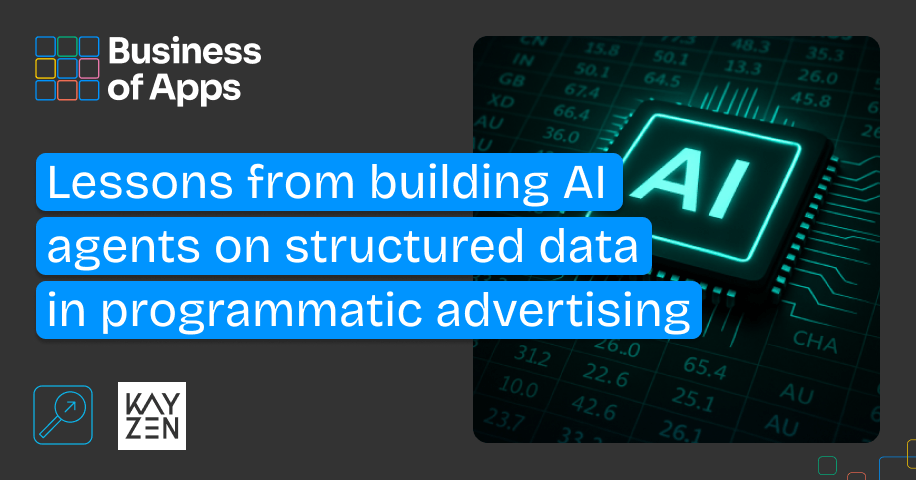In recent years, ad networks and managed DSPs have become more and more sophisticated using user-level identifiers and data to optimize ads to achieve better ROI for advertisers — but first and foremost, to achieve higher margins for themselves. Apple’s changes to IDFA are rearranging this power dynamic and creating new opportunities.
Facebook and Google both use deterministic user-level data to optimize ads. Google likely also uses Playstore payment transaction data to identify high-value users (limited to Android only). All sophisticated managed DSPs and ad networks have built so-called device graphs. But this will change with Apple’s announcement that it will require developers to ask for opt-in to obtain the IDFA with iOS14. For many mobile marketers, the announcement has come as a shock to the system. Still, the truth is it poses a massive opportunity for new market entrants to compete with established players.
The increasing importance of contextual algorithms
With IDFA a thing of the past, marketers have to rethink their targeting strategies — and that will primarily mean an increased emphasis on contextual algorithms. This challenge demands that marketers review their marketing stack and the vendors they work with as strategies shift. At Kayzen, we anticipated that something like Apple’s decision to do away with IDFA might happen and started focusing on contextual optimization algorithms early on.
We released a feature a year ago that allows advertisers to use different optimization strategies for traffic with vs. without device IDs. It also will enable advertisers to excel at in-house buying and optimization strategies without the need to rely on the advantage of large device graphs.
The writing is on the wall. Even before Apple’s IDFA changes, privacy regulations like GDPR made it clear that marketers had to rethink some of their privacy-busting tactics. But we may finally be at an inflection point. I recently talked to someone who works at Facebook, and she confirmed their engineering and product teams have recently shifted focus to non-device ID contextual algorithms. There is market share up for grabs — what advertisers need to do now is excel at exploiting contextual information.
While some may feel returning to contextual ads may be a step back, the truth may be quite the opposite. As Mathew Broughton wrote on ExchangeWire, “Indeed, the proliferation of programmatic spend means that, unlike in the past with manual media buys, ads using contextual data can be served in real time, delivering both scale and granularity. And, as contextual targeting taps into real-time triggers – such as live keyword searches – it’s actually better aligned with programmatic than any other type of targeting. All things considered, its return to front and center is almost overdue.”
What does contextual advertising look like
We’ve all been there — followed by the same ad all over the internet just because we looked at a pair of shoes two weeks ago. But with contextual advertising, you can serve ads to users for products that make sense in their current context.
For instance, instead of seeing ads for shoes while you’re reading a story on the Wall Street Journal app, you may see ads about financial planning products or credit cards with great deals. Instead of relying on device-level information that may be outdated — maybe the user bought a different pair of shoes in a local store — ads will depend on a user’s current context to serve more relevant ads.
But context is more than the content environment the user consumes while using an app. Is the user at home, at work or on commute? What time of the day is it and what is the likely context of usage at that time of the day for the app the ad is advertised in? When you serve an ad in a game during peak traffic hours for a user who is on a subway it’s a different context than serving that ad late in the evening while she is playing that same game at home on the couch. How is the user holding their mobile device, horizontally (portrait) or vertically (landscape)? Also session depth plays an important role to understand the context. If your ad is the first one appearing after the user opens up an app the context is different than if it’s number 10, 20 or 100. The attention level and resulting click and conversion behaviour will significantly differ.
Leveling the playing field for smaller competitors
It’s nearly impossible for small advertisers and DSPs to compete with Facebook and Google when it comes to data. With billions of users, the numbers are in their favor — and that remains true when it comes to device graphs. But as Apple rolls back IDFA, the scales will be rebalanced — putting pressure on the middlemen to improve their margins.
Companies that can look at the rollback of IDFA as an opportunity to take a step back from overly targeted ads — sometimes crossing the line into creepy territory — and instead use real-time information and context to their advantage will win the post-IDFA challenge.



